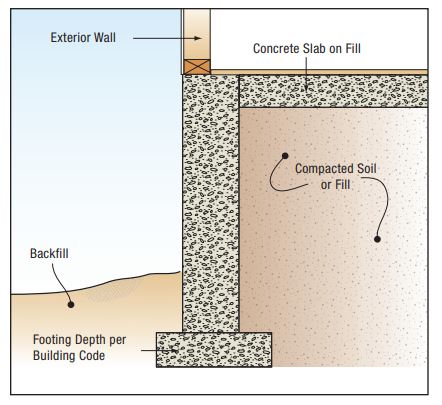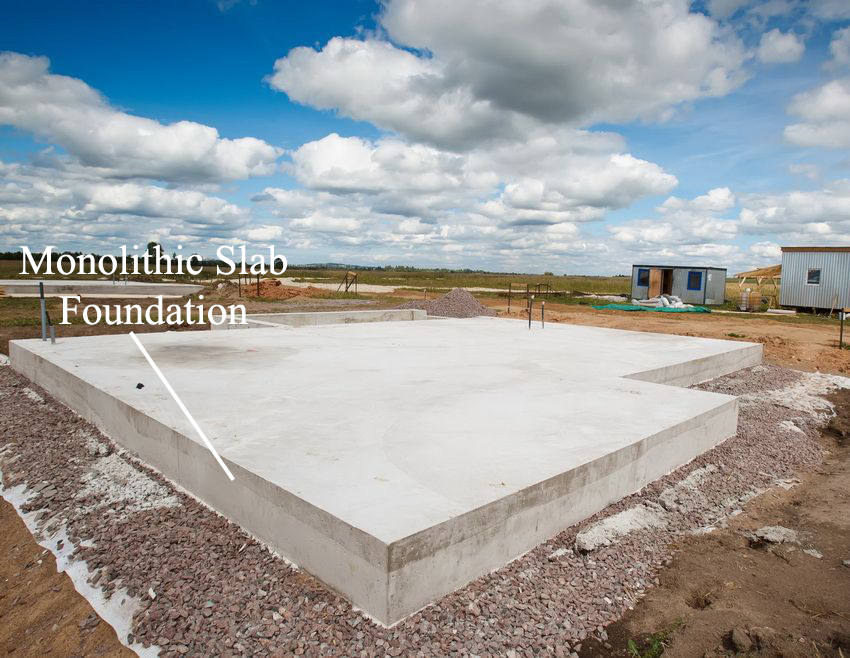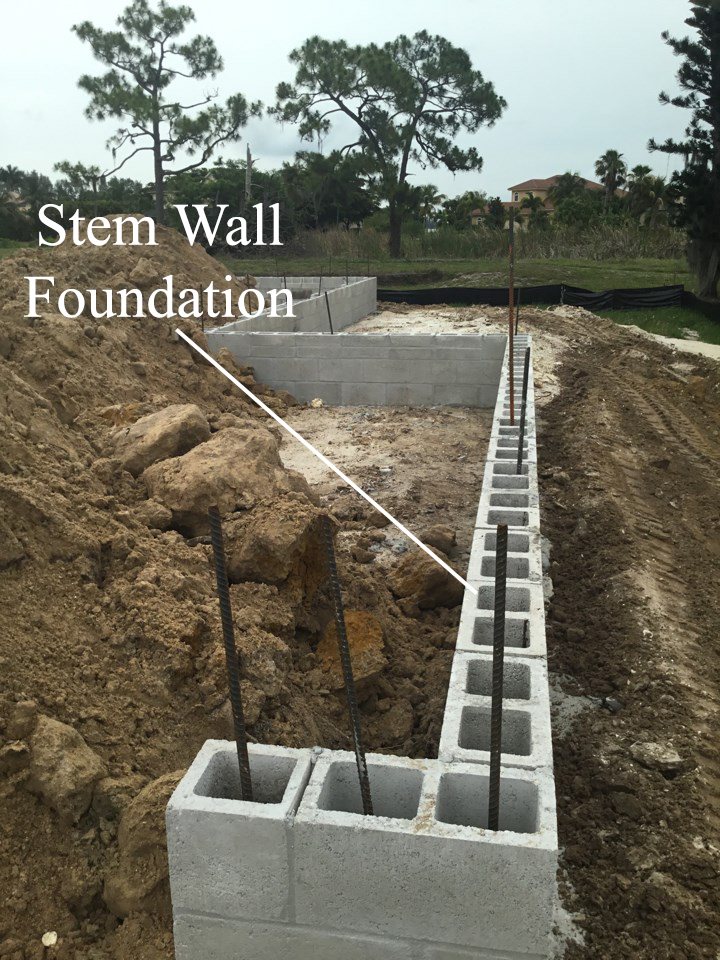There are two types of foundations predominantly used during the construction of a new home; Stem-Walls and Monolithic slabs. Both carry specific benefits and challenges during construction and it is important to know these before breaking ground during a new home building project. In this article we will explore the differences and benefits between the two types of foundations.
Monolithic Slab
Monolithic means “all in one pour” so the foundation is constructed in one single pour that is made up of a concrete slab with thicker areas under load bearing walls and all perimeter edges to take the place of footers. Because this Slab is poured all at once, it is much faster and keeps labor costs low.
When used under the right conditions, Monoslabs can be just as sound as Stem-Wall slabs. In most sub division community builds, the ground is level throughout the entire property and more densely compacted with very little fill dirt required. In this case, if all finished floor elevations are the same from lot to lot and there is very little slope, Monoslabs may be the best choice.
There are some major issues that can arise if lot conditions are not conducive to a Monolithic Slab. They can not be used when a lot of fill dirt is required because the concrete is more likely to crack if the ground isn’t compacted well enough. This is a problem for homes that need to be built up to rise above a flood plain provided by your engineer (as most lot builds in Florida must). In this situation, Monoslabs tend to crack around the perimeter walls and other major load bearing areas. This cracking can cause structural issues which affect other aspects of the house further down the building process like drywall and flooring if the framed walls aren’t stable.
For these reasons, most lot builders in Florida (including us) prefer stem-wall foundations.
Stem-Wall
Stem-Wall slabs are constructed in a multi-part process where a footer is poured at virgin ground level, then blocks are laid forming a wall up to the finished slab elevation. This type of foundation is much more stable when fill dirt is required achieve the final build elevation. This process takes a bit longer than the Monolithic Slab, but a more stable foundation will prevent other issues down the road that could arise with trusses or wall construction. When dealing with varying lot conditions Stem-Walls are a much more consistent method of foundation construction.
Quality construction starts with a solid and consistent foundation.


